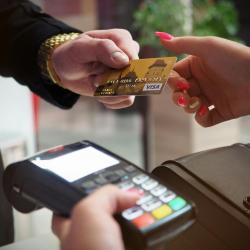Couponing for Beginners: Where to Start
Saving money wherever possible has become more important than ever. One effective strategy to stretch your dollars further is through couponing. Although it may seem a bit overwhelming at first, once you get the hang of it, couponing can be a fun and rewarding way to reduce your grocery and household bills. Here's a simple guide to help beginners get started on the right foot.
Understanding the Basics
What are Coupons?
Coupons are vouchers that provide discounts on specific products or services. They can come in many forms, including paper cutouts, digital codes, or app-based deals.
Types of Coupons:
- Manufacturer Coupons: Issued by the producers of goods, these can typically be used at any store that accepts them.
- Store Coupons: Offered by individual retailers, these are redeemable only at their locations.
- Printable Coupons: Found online and can be printed for use in physical stores.
- Mobile Coupons: Available through apps or text messages for digital redemption.
- Rebate Apps: Provide cash back offers after purchase. Examples include Ibotta, Rakuten, and Checkout51.
Getting Organized
Organization is key to successful couponing. Here’s how you can get started:
-
Collect Coupons: Start by gathering coupons from Sunday newspapers, online coupon sites, store promotions, and mobile apps. Some popular online coupon sites include Coupons.com, SmartSource, and RedPlum.
-
Sort and Organize: Use a binder with plastic sleeves, a filing box, or a digital app to organize your coupons by category (e.g., dairy, frozen foods, toiletries) or by expiration date.
-
Plan Your Shopping: Look at store ads and match them with your coupons to maximize savings. Many stores allow "stacking," or using a manufacturer coupon with a store coupon on the same item for additional discounts.
Learning the Lingo
As you delve deeper into couponing, you’ll encounter several terms and abbreviations commonly used by experienced couponers:
- BOGO: Buy One, Get One free or at a discount.
- Catalinas: Coupons printed at the register after a purchase.
- DND: Do Not Double – a restriction on the coupon value.
- MIR: Mail-In Rebate.
Strategies for Success
-
Start Small: Begin with a few coupons and gradually increase as you become more comfortable. Master each step before adding more complexity.
-
Be Flexible: Being open to different brands can often yield better deals as you can utilize more of your available coupons.
-
Keep an Eye on Sales: Coupons combined with store sales can lead to significant savings. Use store loyalty programs to gain further discounts or points.
-
Set a Budget: Even with coupons, it's essential to stick to a shopping budget to avoid unnecessary purchases.
Common Pitfalls to Avoid
-
Expired Coupons: Always check the expiration dates to avoid disappointment at the checkout line.
-
Impulsive Purchases: A deal isn’t a deal if you won’t use the product. Avoid buying items just because you have a coupon.
-
Excessive Stockpiling: While having extra is wise, buying in excessive amounts can lead to waste, especially for perishable goods.
The Bottom Line
With persistence and practice, couponing can become a seamless part of your shopping routine, offering considerable savings over time. Remember, the key is to stay organized, be patient as you learn, and enjoy the process. With these strategies in mind, you'll be on your way to mastering the art of couponing. Happy saving!






















